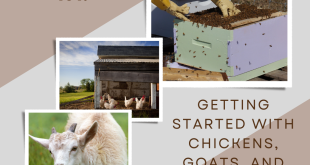Growing a Vertical Garden: Tips and Creative Ideas
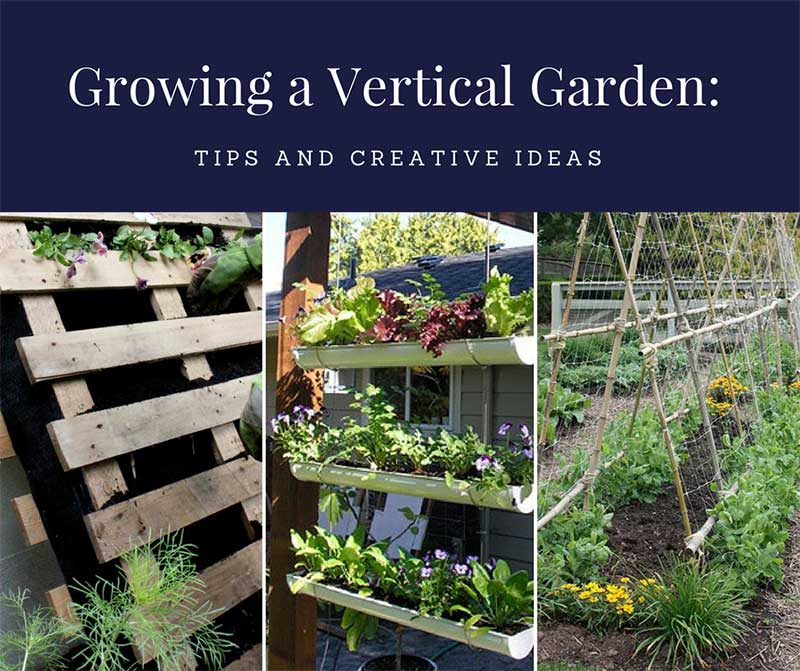
Apartment dwellers and those with limited yard space benefit from growing a vertical garden. Space limitations can be frustrating when you dream of growing tons of produce for your family. Lack of space doesn’t mean a large garden is impossible. You have to get creative. Gardens can grow anywhere, including heading vertically.
Opting to grow your plants vertically comes with benefits. You use less space, which is great for those who lack space in there gardens. The plants start off the ground, reducing diseases and insect infestations. Harvesting is much easier as well. You won’t get a backache from harvesting all those ripe cucumbers!
To create your vertical garden, you have to think about the plants you want to grow. Some plants require more support than others. A vertical garden takes time to create and materials. There are plenty of plants that do well growing in a vertical garden.
Plants for a Vertical Garden
Before you make a choice, consider the available sunlight on your patio or yard. Many plants, such as tomatoes and cucumbers, require a lot of sunlight. These plants need a minimum of six to eight hours. Leafy plants typically can do with less. Consider how much sunlight you have before you pick your plants!
Tomatoes
Tomatoes are a common choice for a vertical garden. Your local garden store will sell trellises and cages for them. While determinate tomatoes don’t typically require cages because of their compact size, indeterminate tomatoes have long vines that stray when not contained. Tomatoes are prone to diseases, so make sure to give these plants a support system.
Legumes
Peas and green beans come in bush and pole varieties. Bush legumes require no support. Pole varieties need a fence or trellis to grow up. Pole varieties also tend to have a larger harvest over an extended time.
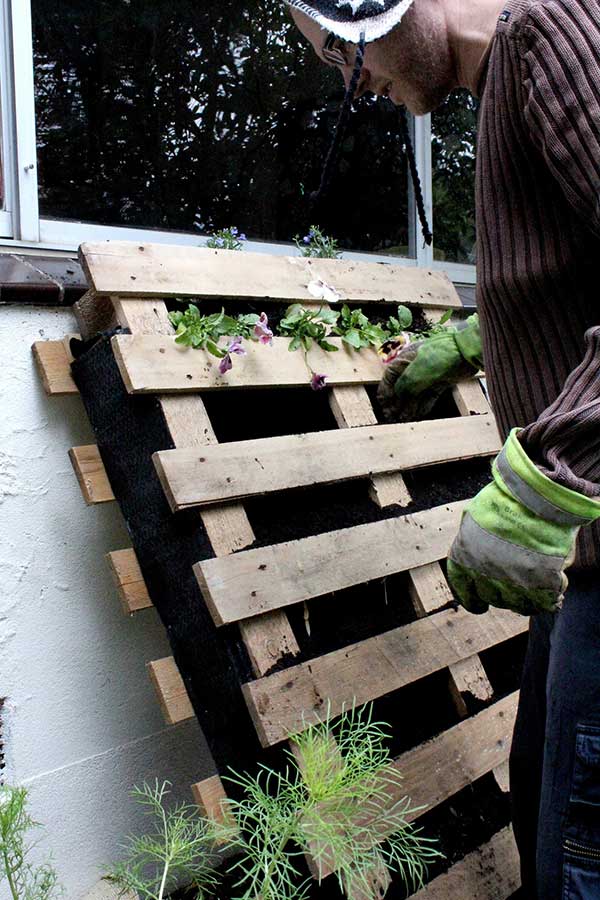
Cucumbers
If there is one plant people think of when it comes to vertical gardening, cucumbers are it. Cucumber plants produce lightweight, fast-growing fruit. The long vines prefer to cling to a fence or trellis.
You do have to make sure you select a variety that doesn’t produce monster cucumbers. Gardeners also can grow compact pumpkins, melons, and squash, so long as the size is smaller than average.
Leafy Vegetables
Lettuce and spinach won’t grow up a trellis, but their compact size makes them a fantastic choice for garden pockets. You can make homemade varieties with materials such as rain gutters.
Brassica Family Veggies
These veggies are prone to pest issues, especially cabbage plants. If you’ve struggled with pest control in previous years, growing brassica family veggies vertically helps to make it easier to spot problems. You will notice eggs or damage before its too late.
What is included in the brassica family? Cabbage can grow in a medium-sized pot so long as you use a nitrogen-rich fertilizer. Broccoli and cauliflower can grow in most containers, so long as the temperatures don’t get too hot. Kale is another choice, and they love pots! Kale is a cool weather crop that gets a bitter taste if the temperatures get too high.
Radishes
Unlike other root vegetables, radishes don’t get too large. If you provide adequate space for them to grow in the soil, radishes can be quite successful in a vertical garden. The container you select should be at least six inches deep. Radishes are fast growing, often ready for harvest within three weeks. You will get several batches in your vertical garden!
Ideas for a Vertical Garden
Pole Bean Teepee
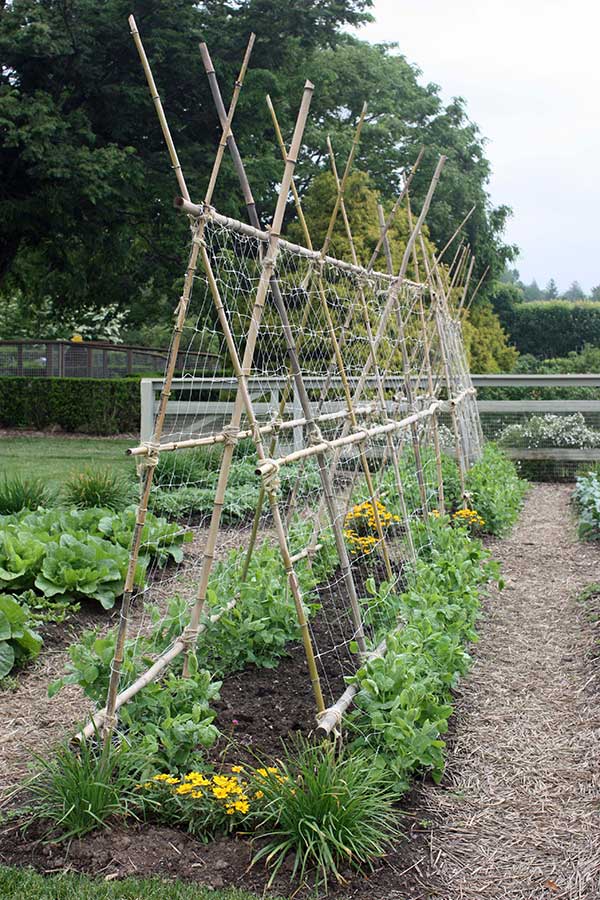
Teepees give structure for beans and peas to grow upwards. All you need is bamboo or large sticks tied together at the top. Your kids will love this structure, especially as the plants grow upwards!
Garden Pockets
Garden pockets are exactly what they sound like. The pockets are made from felt or canvas. You put your plants into each of the pockets. You can create your pocket system by using a thick cloth and hanging it up. Then, fold in half and hang up the other side of the cloth. It will resemble a bag!
Use Soda Bottles
If you have extra bottles laying around in your house, make use of them. All you need to do is add a hook to each bottle and hang with a string. Cut out a hole for the plant on the side of the bottle and add drainage holes. Now, hang those bottles up wherever you want!
You don’t need plastic containers to make this happen. Metal coffee cans are cheap and can be nailed to any all or support system. These cans are deep enough for herbs and leafy veggies.
Shelves
If you want to put your plants in containers, shelves are beneficial. You can place as many plants on the shelf as space allows. The only negative is that you have to make sure all of the plants receive the same amount of sunlight, so consider using shelves with slats for circulation of water.
Hanging Baskets
Everyone has used hanging basket a few times in their lives. You can put a hanging basket anywhere, from your balcony to a hook in your garden bed. Many vegetables love hanging baskets, especially those that have trailing qualities. Tomatoes can grow upside down in hanging baskets. Strawberries and sweet potatoes vines are good choices too.
Trellises
A common choice for the vertical garden is trellises. Trellises support vine crops such as beans, peas, squash, cucumbers and more. Get creative with your trellis choices! A ladder makes a fantastic trellis. Plants will even grow up corn stalks! These plants don’t care what their support system, so long as they have one!
Rain Gutters
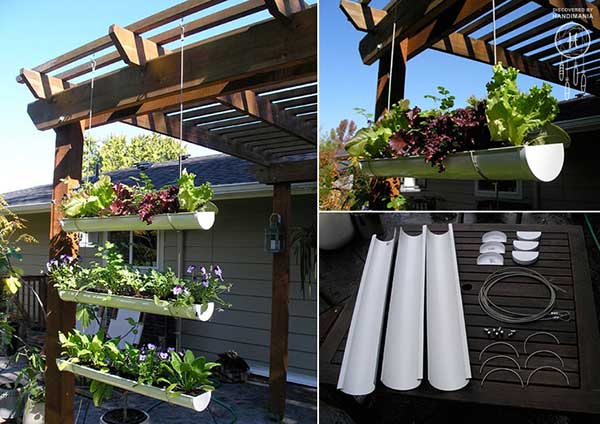
If you attach rain gutters to the side of your shed or house, you have the perfect place to plant leafy vegetables. Some gardeners put the gutters at a slight angle, allowing the water to slide down from the top. There is no right or wrong choice though. Gutters are deep enough to provide adequate root space for many plants!
 Home and Gardening Ideas At home and Gardening ideas we believe inspiring readers about homesteading, self sufficiency
Home and Gardening Ideas At home and Gardening ideas we believe inspiring readers about homesteading, self sufficiency





